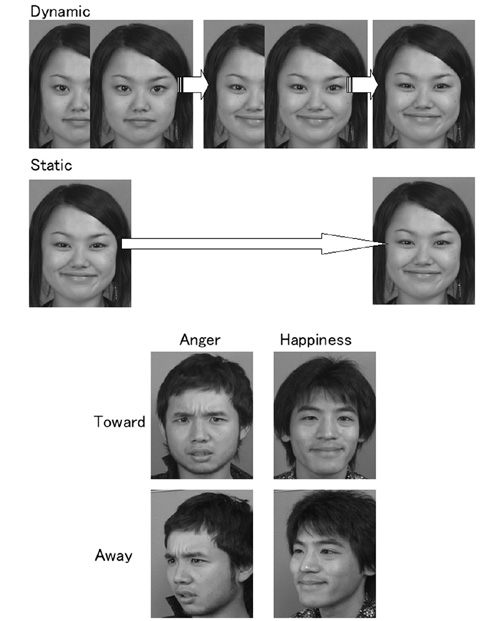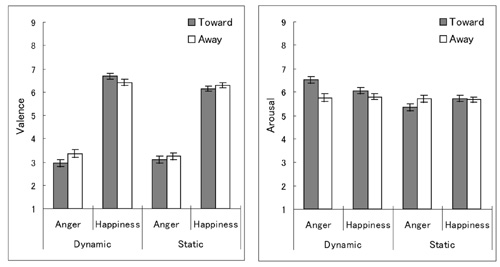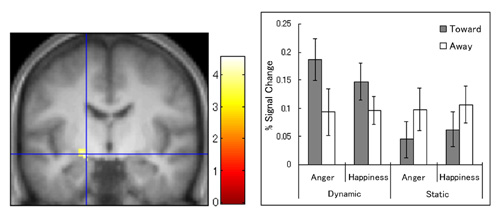SATO Wataru Laboratory
Amygdala integrates emotional expression and gaze direction in response to dynamic facial expressions
(Sato, Kochiyama, Uono, & Yoshikawa: Neuroimage)
Neuroimaging studies suggest that the amygdala integrates emotional expression and gaze direction, but the findings are inconsistent.
We hypothesized that the dynamic facial expressions, which are more salient stimuli than static facial expressions are, would reveal the integration of emotional expression and gaze direction in amygdala activity.
To test this hypothesis, we presented dynamic and static facial expressions of anger and happiness looking toward and away from the subject.
We visualized brain activity during these presentations using functional magnetic resonance imaging (fMRI).
After the image acquisition phase of the study, the subject°«s experienced emotion in response to each stimulus was investigated.

The left amygdala showed an interaction between presentation condition and gaze direction, indicating higher activity in response to dynamic, but not static, expressions looking toward the subjects than to expressions looking away from them.
This was true for both angry and happy expressions.
This pattern corresponded with the intensity of emotional arousal.


These results suggest that the amygdala integrates emotional expression and gaze direction in dynamic facial expressions and modulates emotional arousal.
Return to
Recent Research.
Return to
Main Menu.


